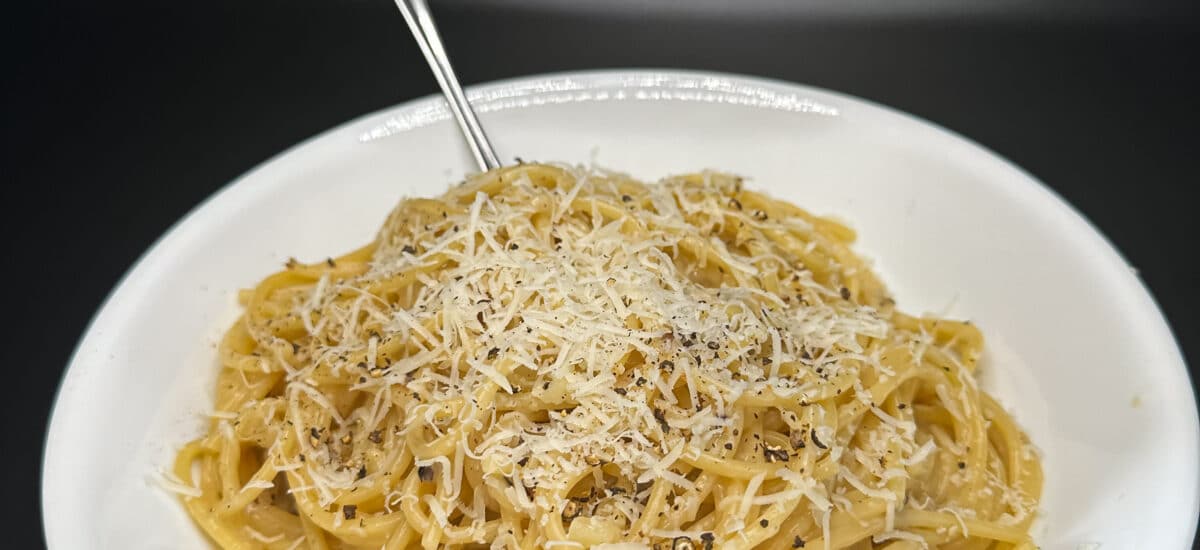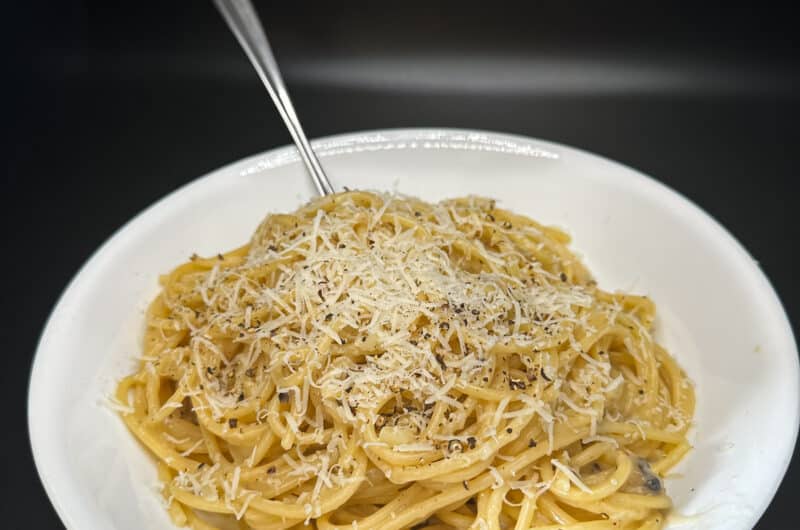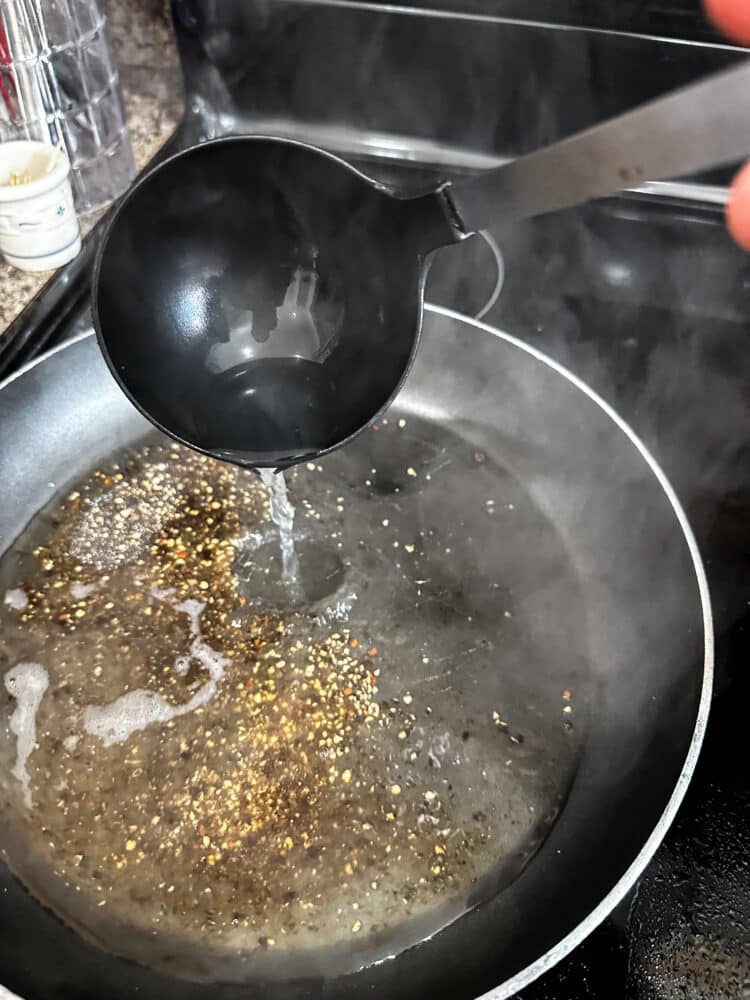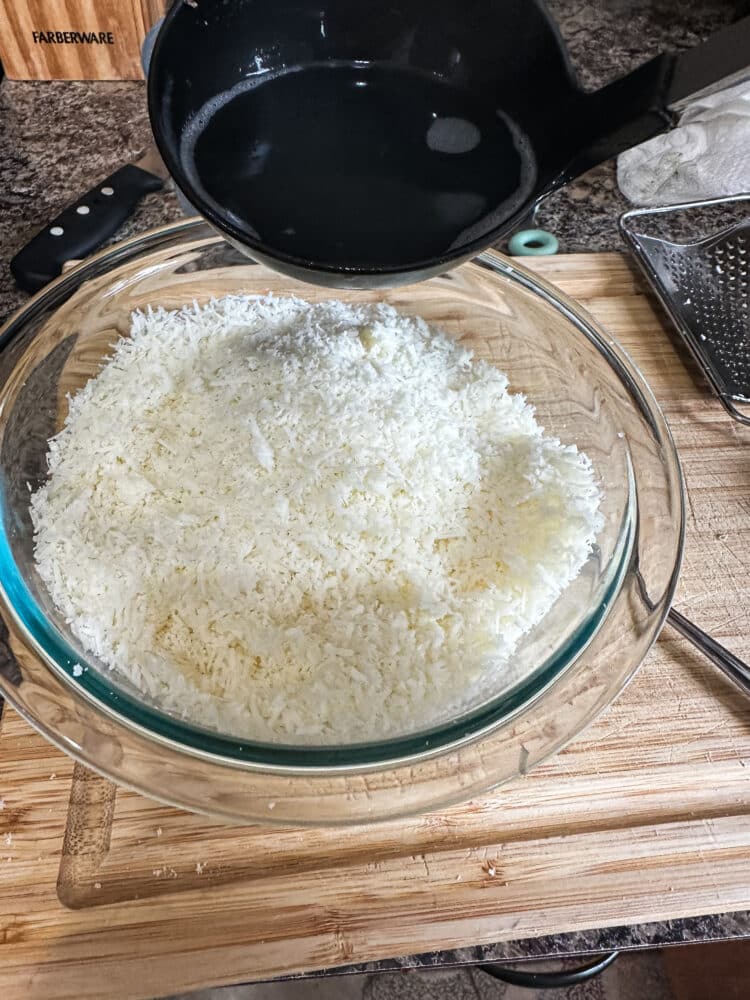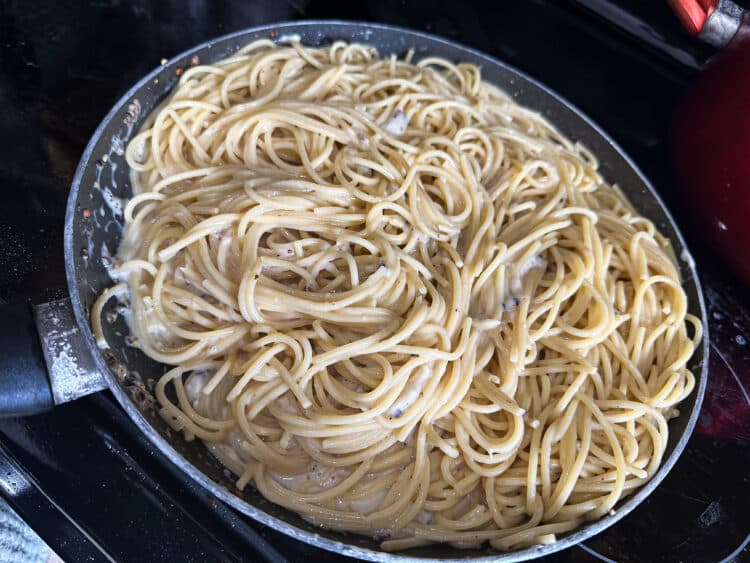Cacio e pepe is a classic Roman dish that features three simple, yet complementary ingredients. Originating from ancient Rome, this Italian cuisine exemplifies the saying “less is more,” continuing to stand up against the test of time.
Table of Contents
An Introduction to Authentic Cacio e Pepe
Cacio e Pepe, literally translating to “cheese and pepper,” still stands as a classic example of Italian culinary tradition, where less is often more. This Roman dish, with origins stretching back to ancient Rome, embodies the ingenuity of shepherds who roamed the Italian countryside. Over the centuries, Cacio e Pepe has transcended its humble beginnings, evolving into a beloved classic that captures the essence of Roman cuisine. Its rise to global acclaim is a testament to the dish’s universal appeal, where the interplay of three simple ingredients resonate with palates from all around the world.
Keeping It Simple: The Trio of Ingredients
In authentic cacio e pepe, simplicity is not a shortcut but rather a philosophy that elevates basic ingredients to yield a dish far greater than the sum of its parts. The focus on quality is critical to its success, and each ingredient must be carefully chosen and utilized, as there are no elaborate sauces or complex seasonings to hide behind. This dish celebrates the purity of its ingredients, offering a valuable lesson in restraint and the art of balancing flavors and textures with precision and care.
While you’ll find some non-traditional recipes online that include butter, olive oil, or parmesan cheese, the authentic version contains only the three ingredients below:
- Pecorino Romano: This aged sheep’s cheese imparts a sharp, tangy, and salty flavor that balances beautifully with the pasta. When melted, the cheese forms a creamy texture that becomes the backbone of the sauce.
- This type of cheese is not be be confused with the American-style called Romano cheese, which uses milk from cows and has a much different texture & flavor profile.
- Black Peppercorn: High quality, freshly cracked black pepper not only introduces a warm, aromatic quality but also complements the cheese’s saltiness, adding depth and a subtle kick that helps to define the dish.
- Pasta: Traditionally made with tonnarelli (spaghetti or bucatini are perfectly fine substitutes), the choice of pasta plays a crucial role in the overall outcome of the dish. The pasta’s surface and cooking method (trying to extract as much starch into the water as possible) are key to ensuring the sauce adheres well, embodying the dish’s essence.
- Pasta Water: Often overlooked, the starchy pasta water is the secret to achieving the silky, glossy sauce that characterizes authentic Cacio e Pepe. It helps emulsify the cheese and pepper, creating a cohesive blend that allows it to stick to the pasta.
Avoiding Common Mistakes
While the ingredient list for authentic cacio e pepe is small and seemingly simple, creating a consistently high quality version of the dish is actually quite difficult. Common mistakes and pitfalls to avoid include:
- Cheese Clumping: To prevent the cheese from clumping and ensure a smooth, adhesive sauce, gradually incorporate it into the pasta, allowing the residual heat and pasta water to meld it seamlessly.
- Overcooking Pasta: Pasta should be al dente (or slightly under al dente), offering a slight resistance to the bite, as it continues to cook when mixed with the sauce
- Too Much Water in Pot: Adding too much water to your pot will result in less starchy pasta water, which plays a crucial role in bringing the ingredients and sauce together. Only use enough water to adequately cook your pasta for a much better end result.
- Pepper Preparation: Use freshly ground, high-quality black pepper for its full effect, as pre-ground pepper can taste stale and lack the spice’s signature punch.
- Balancing Flavors: The balance between cheese, pepper, and pasta should be harmonious, with no single ingredient overpowering the flavor of the others.
By utilizing and implementing the principles of simplicity, quality, and careful technique, one can master the art of making authentic cacio e pepe, creating a dish that is not only a celebration of Italian culinary tradition but also a testament to the enduring appeal of cooking with intention and respect for ingredients.
Authentic Cacio e Pepe Ingredients
- 8 oz. Pecorino Romano cheese
- 1.5 tablespoons black peppercorn, uncrushed
- 16 oz. spaghetti (thick)
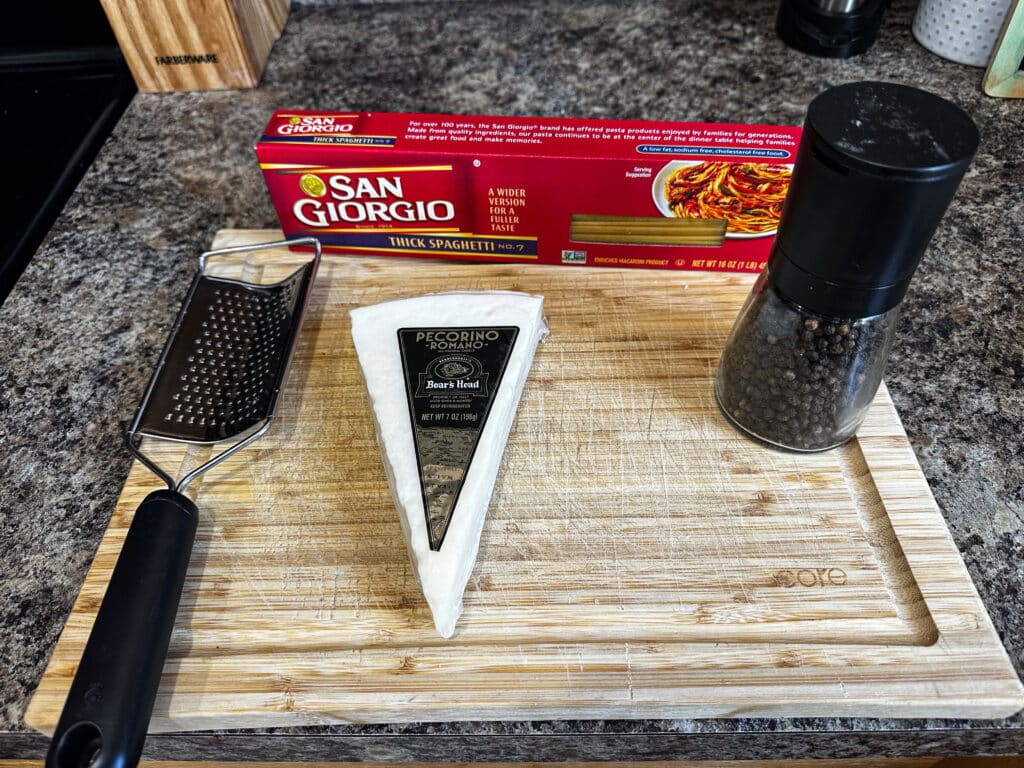
Authentic Cacio e Pepe Directions
- In a large pot, bring water to a boil. Use as little amount of water as possible (just enough to still adequately cover and cook the pasta). The starchier the pasta water is, the better the sauce will come together in the end.
- Add pasta to boiling water, check pasta packaging and boil for 2-3 minutes less than the amount of time until al dente.
- Finely grate Pecorino Romano cheese. Place cheese into larger, heat-resistant bowl.
- As pasta continues to cook, grind fresh, whole peppercorn into a frying pan over medium-high heat. Toast peppercorn until fragrant, 1-3 minutes.
- Using a soup ladle (or measuring cup; 1 ladle = 1 cup), transfer one full ladle into frying pan with toasted peppercorn; stirring frequently. Mixture should lightly bubble. Cook for 1-2 minutes.
- Transfer one half ladle (or half a cup) of pasta water into bowl containing finely grated Pecorino Cheese. Stir continuously with fork until cheese mixture develops a thick, paste-like texture; add more pasta water if needed. If mixture becomes too runny, grate and add more cheese.
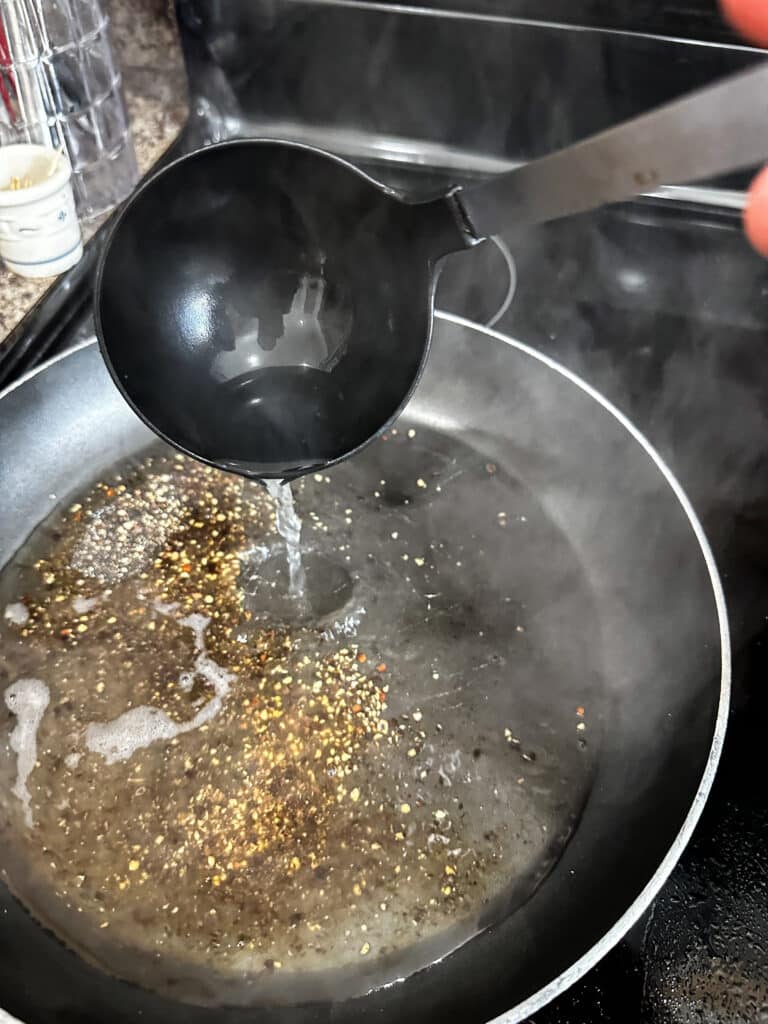
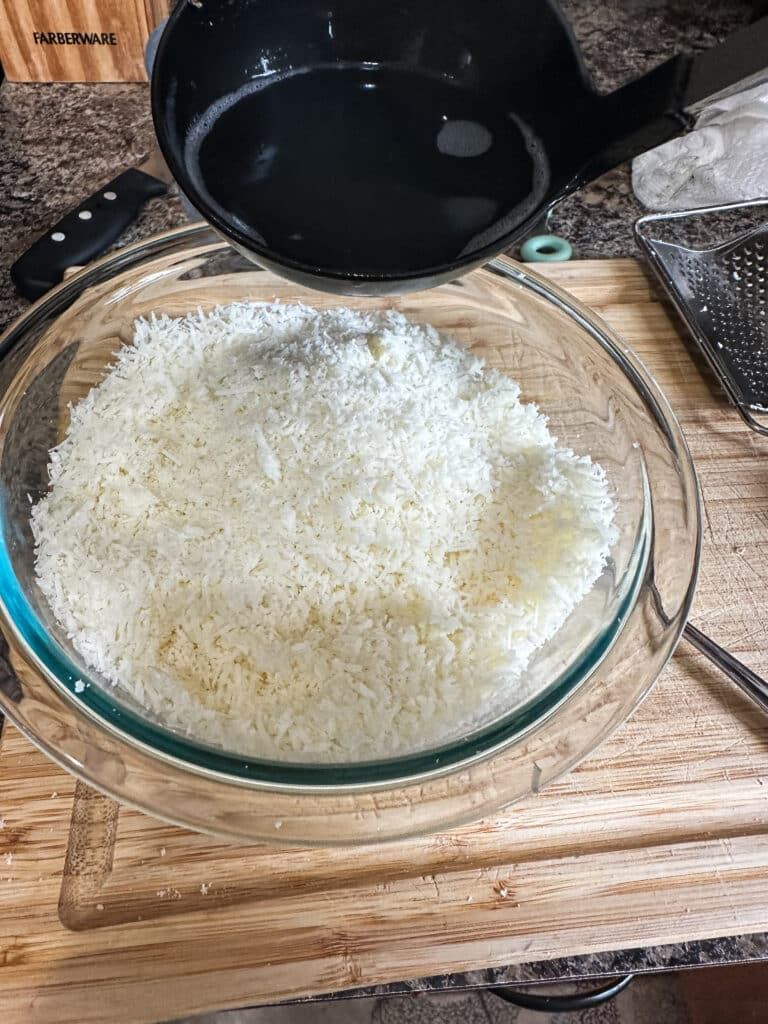
- Save 1.5 cups of pasta water and set aside; drain pasta into strainer (don’t rinse the pasta, but let it cool slightly)
- Transfer pasta into frying pan and add 1 cup of reserved pasta water; mix thoroughly; 2-3 minutes
- Remove frying pan from heat and let sit for 30 seconds. Add in cheese mixture; stirring vigorously until cheese mixture and pasta water in pan become consistent.
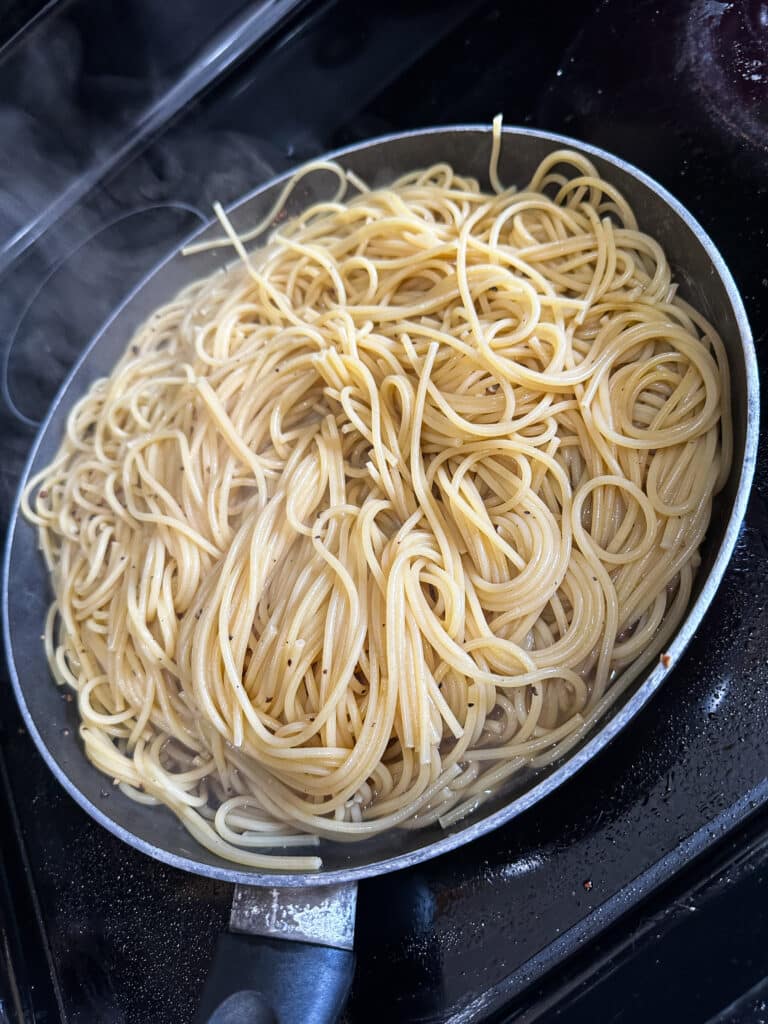
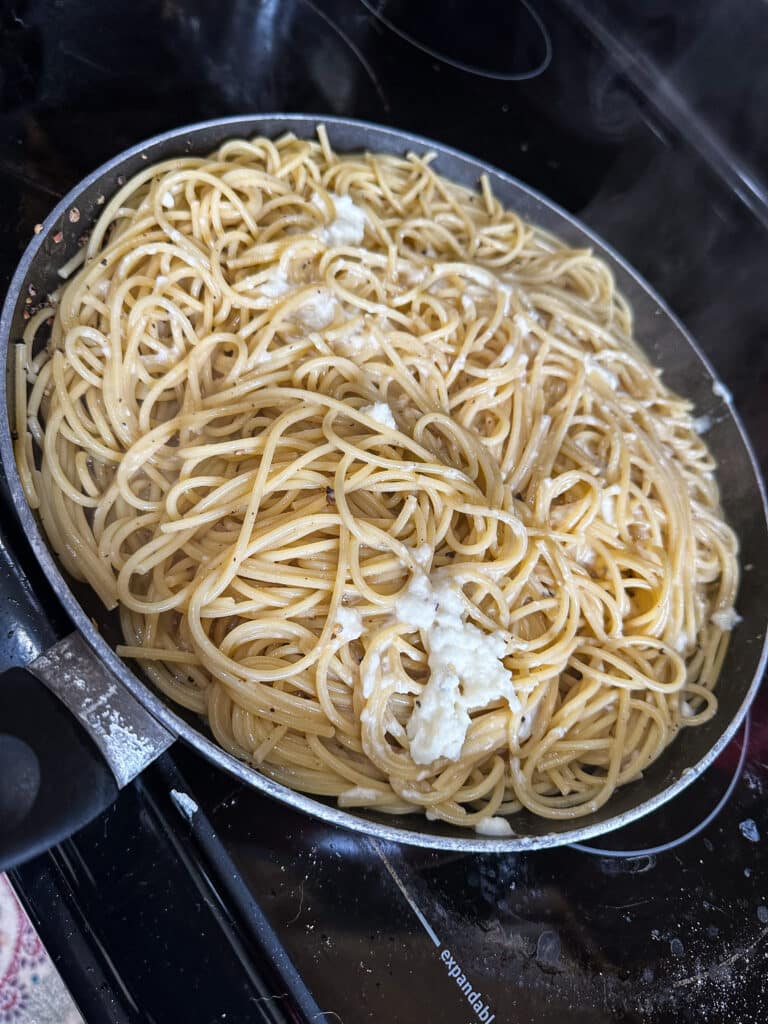
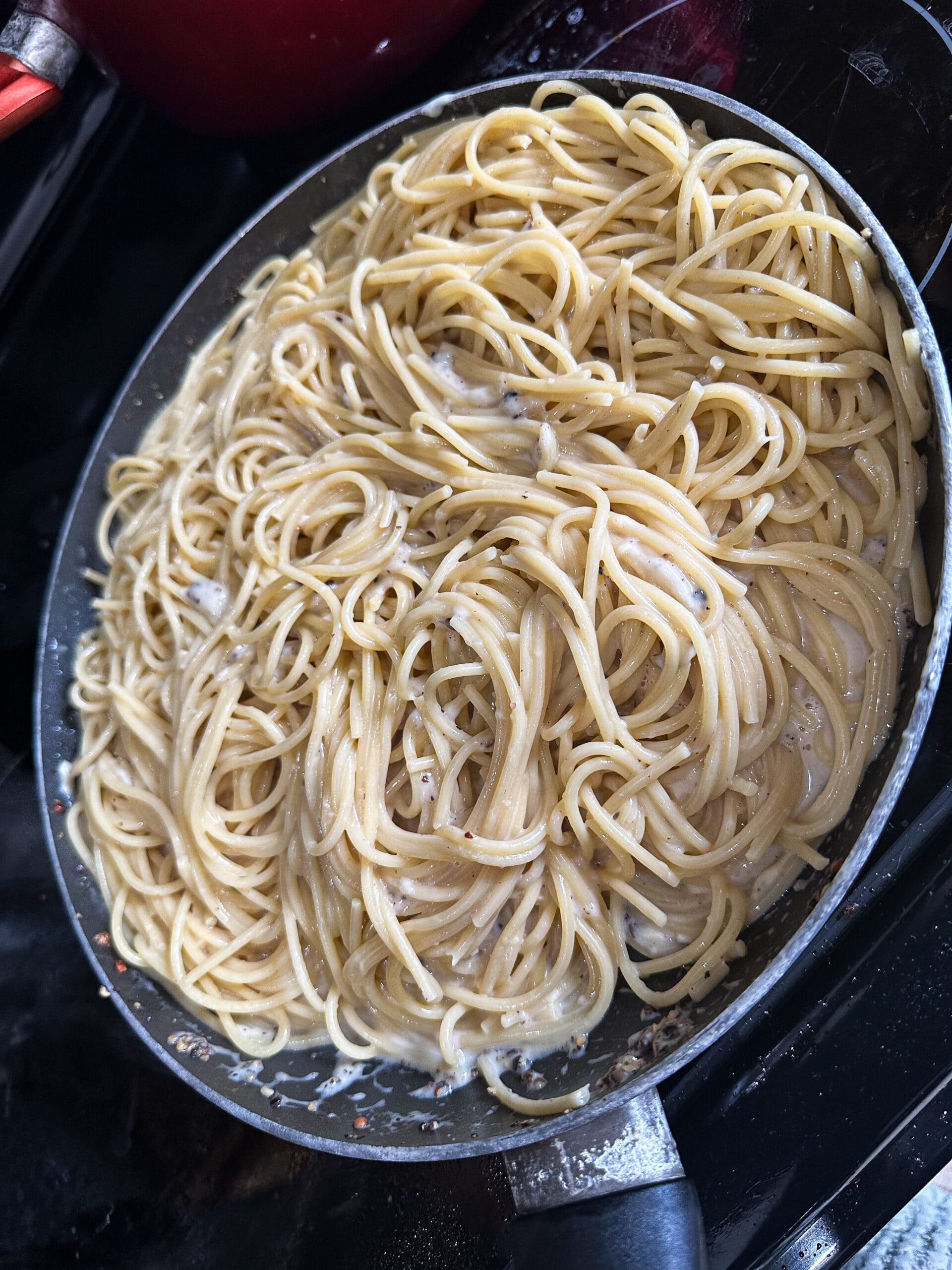
- Serve immediately, topping with more grated Pecorino Romano cheese and freshly ground peppercorn if desired.
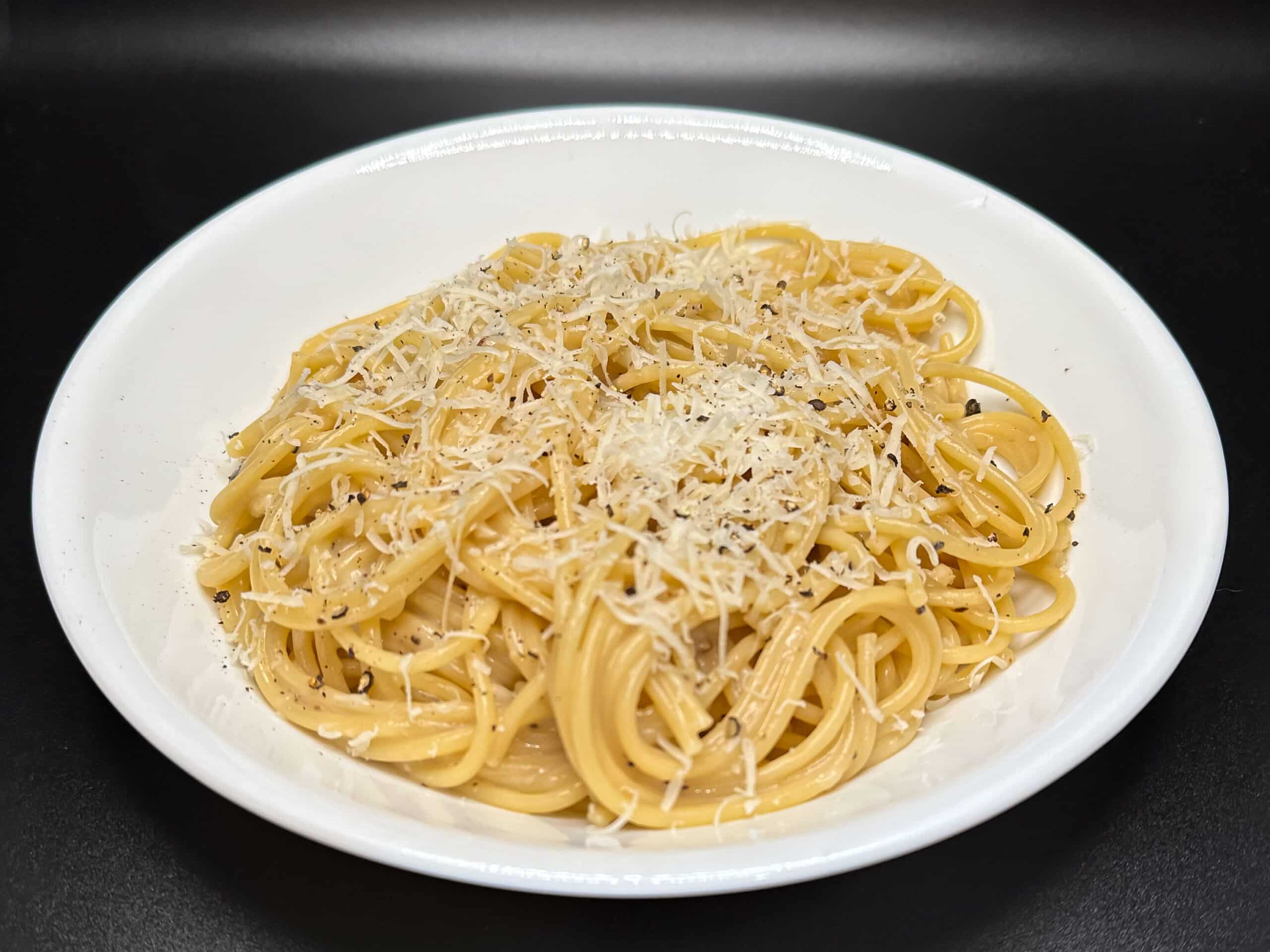
If you enjoyed this classic Italian recipe, you’ll want to check out our Classic Homemade Bolognese Sauce with Pappardelle

